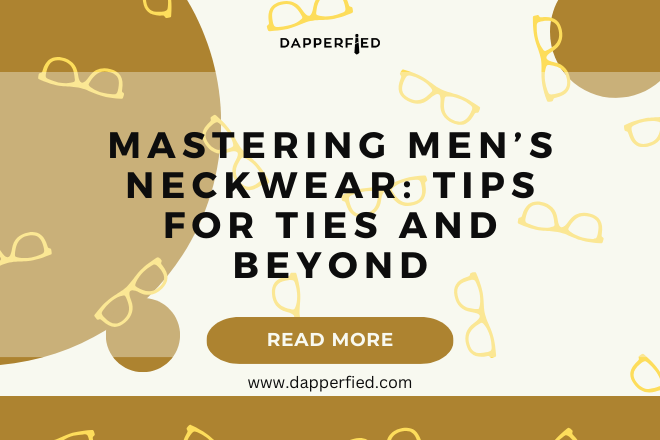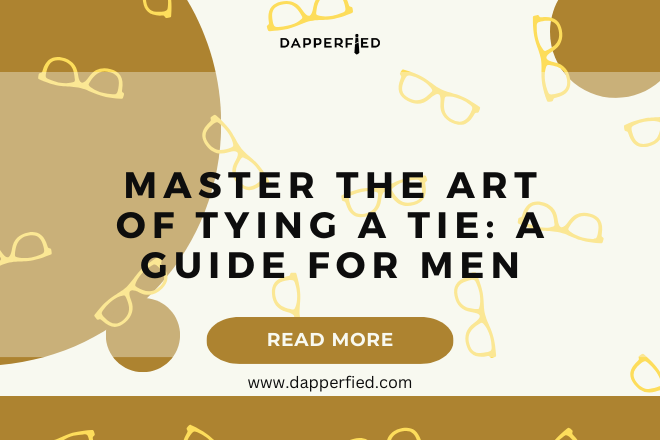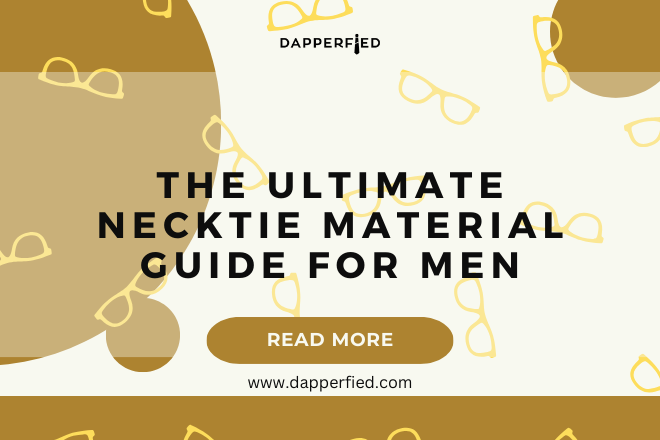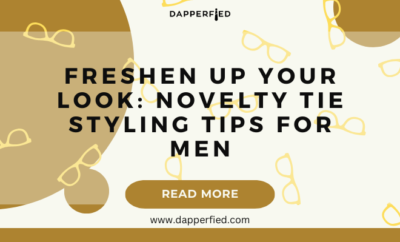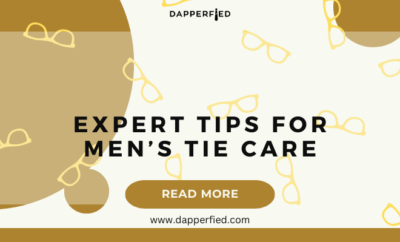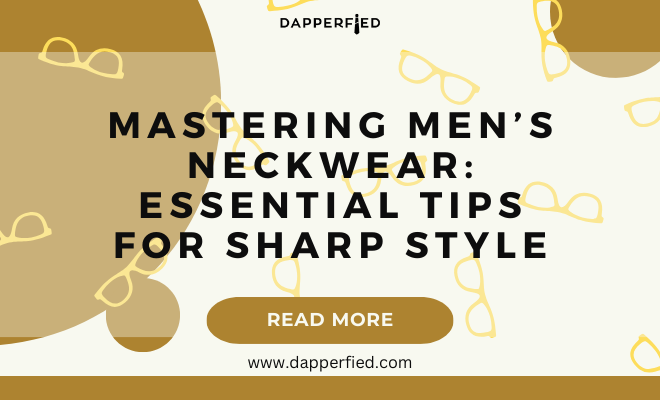
Men's Style
Mastering Men’s Neckwear: Essential Tips for Sharp Style
Neckwear comes in a variety of styles and materials, each with its own unique characteristics and purposes. The most common types of neckwear include neckties, bow ties, ascots, and cravats. Neckties are the most versatile and widely worn type of neckwear, available in a range of widths, lengths, and patterns. Bow ties are typically associated with formal events and are available in pre-tied and self-tie options. Ascots are a more formal and elegant alternative to neckties, often worn with a formal suit or tuxedo. Cravats are similar to ascots but are typically wider and more ornate, often worn with historical or period costumes.
In addition to the different types of neckwear, there are also various materials to consider. Silk is the most common material for neckwear, known for its luxurious feel and lustrous appearance. Other materials such as cotton, wool, and linen are also used for neckwear, each offering a different texture and look. Understanding the different types of neckwear and their materials is essential for choosing the right option for your outfit and occasion.
Key Takeaways
- Neckwear comes in various types such as neckties, bow ties, ascots, and cravats, each with its own unique style and purpose.
- When choosing a necktie, consider the color, pattern, and fabric to complement your outfit and personal style.
- Learning how to tie a perfect knot, such as the Windsor or Four-in-Hand, can elevate your overall look and confidence.
- Matching neckwear with shirts and suits involves considering the color, pattern, and texture to create a cohesive and polished appearance.
- Caring for and maintaining your neckwear, including proper storage and cleaning, can prolong its lifespan and keep it looking sharp.
- Incorporating accessories like tie bars, pocket squares, and collar pins can add personality and flair to your neckwear ensemble.
- Mastering the casual neckwear look involves choosing relaxed fabrics and styles, and pairing them with more casual outfits for a laid-back yet stylish appearance.
Choosing the Right Necktie for Your Outfit
When it comes to choosing the right necktie for your outfit, there are several factors to consider. The first consideration is the width of the tie, which should complement the width of your lapels. A general rule of thumb is that the width of your tie should be similar to the width of your lapels. For example, if you have narrow lapels, opt for a slim tie, and if you have wide lapels, choose a wider tie.
Another important factor to consider is the length of the tie. The tip of the tie should ideally reach the top of your belt buckle when tied. If the tie is too short or too long, it can throw off the balance of your outfit. In terms of patterns and colors, it’s important to choose a tie that complements the rest of your outfit. Solid color ties are versatile and can be paired with a variety of shirts and suits, while patterned ties can add visual interest to your look. When choosing a patterned tie, consider the scale of the pattern and how it will work with the other elements of your outfit.
How to Tie a Perfect Knot
Tying a perfect knot is essential for achieving a polished and put-together look. The most common knot for neckties is the four-in-hand knot, which is relatively simple to tie and works well with most collar types. To tie a four-in-hand knot, start by draping the tie around your neck with the wide end on your right side and the narrow end on your left side. Cross the wide end over the narrow end, then bring it under and over the narrow end to form a loop. Pull the wide end through the loop and tighten the knot by holding the narrow end and sliding the knot up to your collar.
Another popular knot is the half-Windsor knot, which is slightly larger and more symmetrical than the four-in-hand knot. To tie a half-Windsor knot, start by draping the tie around your neck with the wide end on your right side and the narrow end on your left side. Cross the wide end over the narrow end, then bring it under and over the narrow end to form a loop. Next, bring the wide end over the loop from right to left, then bring it under and over the narrow end to form a second loop. Finally, pull the wide end through the second loop and tighten the knot by holding the narrow end and sliding the knot up to your collar.
Matching Neckwear with Shirts and Suits
| Shirt Color | Suit Color | Neckwear Color |
|---|---|---|
| White | Black | Red |
| Light Blue | Navy | Yellow |
| Pink | Grey | Blue |
Matching neckwear with shirts and suits is essential for creating a cohesive and stylish look. When it comes to pairing neckties with shirts, consider the color, pattern, and texture of both the tie and shirt. Solid color ties can be paired with patterned shirts for a classic look, while patterned ties can be paired with solid color shirts for a more dynamic look. When mixing patterns, it’s important to consider the scale of the patterns to ensure they complement each other.
In terms of pairing neckwear with suits, consider the formality of the occasion and the style of the suit. For formal events, such as weddings or black-tie affairs, opt for silk ties in classic colors such as black, navy, or burgundy. For more casual events or everyday wear, consider experimenting with different textures such as wool or linen ties, or adding a pop of color with a vibrant tie. When pairing neckwear with suits, it’s important to consider the overall color palette and ensure that the tie complements the suit without overpowering it.
Caring for and Maintaining Your Neckwear
Proper care and maintenance are essential for prolonging the life of your neckwear. To keep your ties looking their best, it’s important to store them properly by hanging them on a tie rack or rolling them up to prevent wrinkles. When it comes to cleaning ties, spot cleaning is often sufficient for removing minor stains. For more stubborn stains or odors, consider taking your ties to a professional dry cleaner.
To prevent wrinkles and creases, it’s important to untie your tie carefully after wearing it and hang it up immediately. Avoid leaving your ties knotted for extended periods as this can cause permanent creases. When traveling with ties, consider using a tie case or roll to protect them from damage. By taking proper care of your neckwear, you can ensure that they continue to look their best for years to come.
Incorporating Accessories with Neckwear

Incorporating accessories with neckwear can add an extra layer of style and sophistication to your look. Pocket squares are a popular accessory that can be paired with neckties to add a pop of color or pattern to your outfit. When pairing a pocket square with a necktie, consider coordinating the colors or patterns for a cohesive look.
Another accessory that can complement neckwear is a tie bar or tie clip. These accessories not only add a touch of elegance to your outfit but also serve a practical purpose by keeping your tie in place. When choosing a tie bar or tie clip, consider the width of your tie and opt for a size that complements it without overpowering it.
Mastering the Casual Neckwear Look
For a more casual and relaxed look, consider experimenting with different types of neckwear such as bow ties, ascots, or cravats. Bow ties are a versatile option that can be dressed up or down depending on the occasion. Pair a bow tie with a casual button-down shirt and blazer for a stylish yet laid-back look.
Ascots and cravats are more formal alternatives to neckties but can also be styled in a casual way. Pair an ascot with a linen shirt and tailored trousers for a sophisticated yet relaxed look. Cravats can be worn with open-collar shirts for a bohemian-inspired look that exudes effortless style.

In conclusion, understanding different types of neckwear, choosing the right necktie for your outfit, mastering different knots, matching neckwear with shirts and suits, caring for and maintaining your neckwear, incorporating accessories with neckwear, and mastering casual neckwear looks are all essential aspects of creating stylish and polished ensembles. By paying attention to these details and experimenting with different styles and accessories, you can elevate your look and make a statement with your neckwear choices.
If you’re looking to elevate your style with accessories beyond neckwear, check out this article on Centinelle Men’s Pocket Squares and Scarves. Adding a pocket square or scarf to your outfit can add a touch of sophistication and personality, and this article provides tips on how to incorporate these accessories into your wardrobe.
FAQs
What are some popular types of men’s neckwear?
Some popular types of men’s neckwear include neckties, bow ties, and ascots.
How should a necktie be tied?
A necktie should be tied with a simple knot, such as the four-in-hand or half-Windsor knot, and the length should be adjusted to reach the belt line.
When should a man wear a bow tie?
A man can wear a bow tie for formal events, such as weddings, galas, or black-tie affairs, as well as for more casual occasions to add a stylish touch to an outfit.
What is the proper way to wear an ascot?
An ascot should be worn with a dress shirt and suit for formal events, and it should be tied in a loose, relaxed manner with the ends tucked into the shirt.
What are some tips for choosing the right neckwear for an outfit?
When choosing neckwear for an outfit, consider the color, pattern, and fabric of the neckwear to complement the rest of the ensemble. Additionally, consider the formality of the event and the style of the outfit when selecting neckwear.

